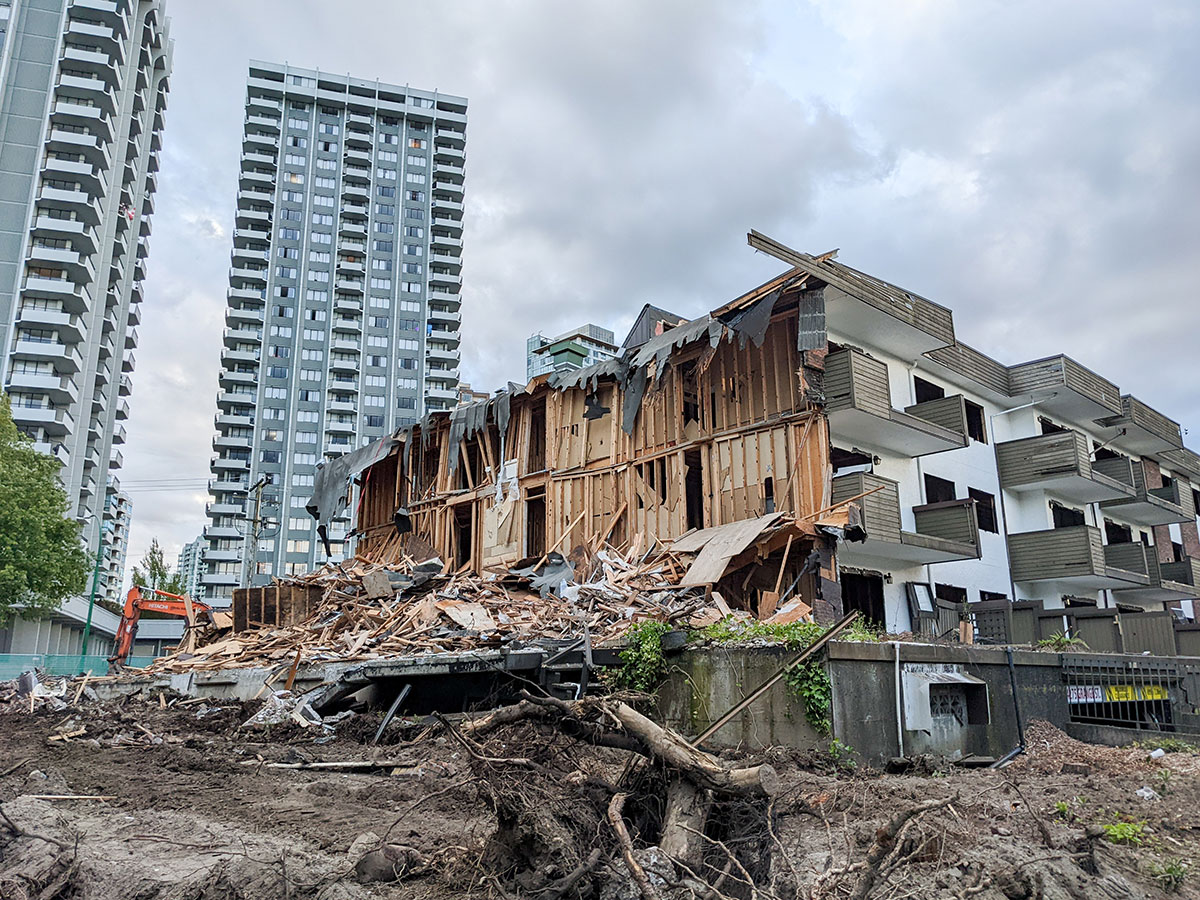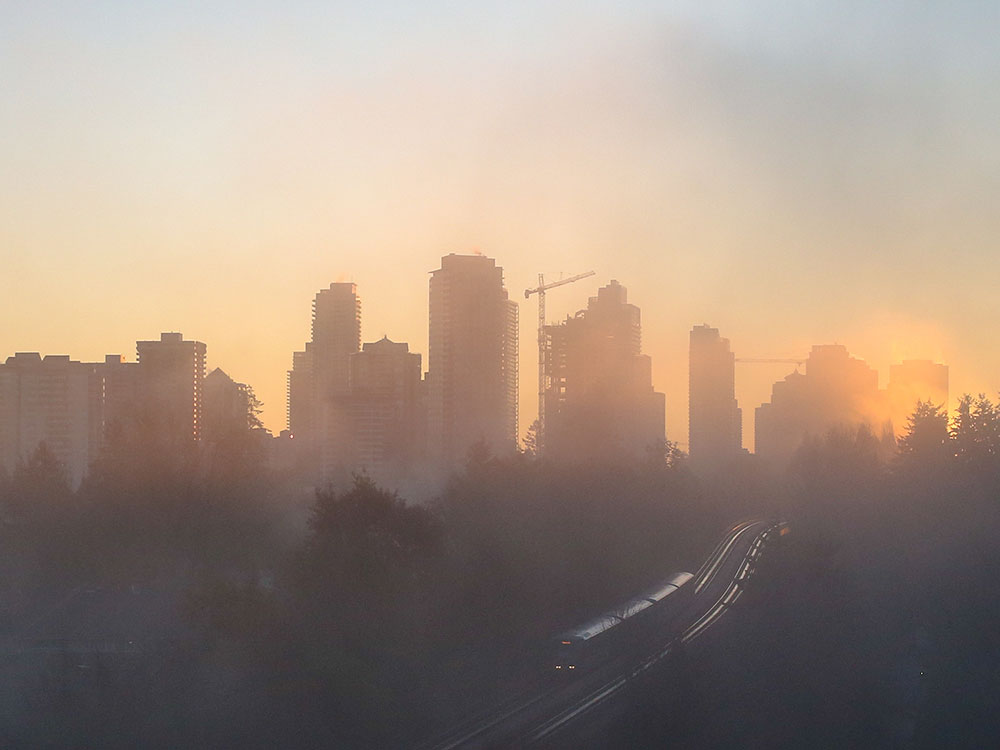Has Metrotown become a bad word?
The Burnaby neighbourhood is perhaps best known as the home of the Metropolis mall, the province’s largest, but it also serves as the busiest office and transit hub outside of Vancouver proper.
As early as the 1970s, Burnaby planners and politicians bandied the idea of Metrotown as a regional centre. Today, the glassy towers stretch up to 52 storeys, and the Metrotown skyline can be viewed across Burnaby. Look up from the sidewalk and you might think you’re in downtown Vancouver.
But for some, this growth is too much.
We don’t want the “Metrotowning” of Port Moody, said 22-year-old Rob Vagramov in 2014 during his successful campaign for a seat on city council. That would turn Port Moody into another “generic suburb” without “a sense of unity, a connection to the city,” he said.
That term became “Metrotownification” when Vagramov ran successfully for Port Moody mayor in 2018. What Metrotownification meant to him: “It’s building as big as possible, as quickly as possible, and a lot of quality-of-life considerations... are afterthoughts.”
Residents in other parts of the Vancouver region have also expressed their disdain for the neighbourhood that has become Burnaby’s burgeoning downtown.
In response to Tsawwassen’s plans for its town centre, the Delta Optimist ran a letter to the editor titled “I Don’t Want to See Metrotown in Tsawwassen.”
In Vancouver, a group of west-side residents called the Jericho Coalition said that the proposal for the development of the Jericho Lands — by the city’s three host nations and the federal Canada Lands Co. — was “someone’s idea of a joke.”
It “looks more like Burnaby’s #MetroTown than the most beautiful natural beach area in Vancouver,” they tweeted. “Sixty concrete #towers on this property do not respect the land or the people. It looks #unlivable & #unlovable.”
As Burnaby is about to complete its official community plan for provincial review this year, what exactly has Metrotown come to stand for?
The city hall reporter from the local paper Burnaby Now has been collecting these multiple meanings, calling it “Metrotown metonymy,” people using it to “mean whatever they want it to mean.”
The neighbourhood has become a Rorschach test. Depending on who you are, you’re likely to see Metrotown’s growing pains differently.
Is it towers and traffic?
It’s not just people from elsewhere in the region that have these negative feelings towards Metrotown.
Last September, when Burnaby council considered moving the aging city hall from its existing location by Deer Lake to a new one in Metrotown, a segment of Burnaby’s own residents were strongly opposed.
In a flurry of letters to the Burnaby Now, a number of local residents decried the density and traffic.
“Too congested and dense,” wrote one. “Please do not make the Metrotown SkyTrain area more chaotic and congested than it already is,” echoed another, who called the proposed move a “nightmare.”
Parking was a major theme of the letters.
“It’s not central, is too busy and densely populated for anyone to get to by car. Yes, by car,” wrote one who said builders needing permits won’t be taking transit. “Metrotown is a terrible location for doing city hall business,” added another. “Keep it where it is.... There’s always parking.”
The backlash won, and council decided to avoid Metrotown and keep city hall where it is.

Is it displacement and unaffordability?
Murray Martin remembers encountering these residents who were against large-scale development at city hall meetings.
While those residents were upset by the densification, Martin, a member of the housing advocacy group Acorn, was at those meetings for another reason: displacement and unaffordability.
“At those hearings, you’d always have a few people complaining about increased traffic, not being able to see the mountains — that kind of stuff,” he said.
“But they weren’t opposing it for [the same reasons] we were: displacement. They were more self-interested, where ours was a class-based analysis.”
During the “demoviction” years of the 2010s, Burnaby was displacing the residents of low-rise rental apartments in favour of some of the region’s tallest condo towers, while pocketing cash bonuses for extra density.
Displacement by demoviction has cooled down since the election of the current mayor, Mike Hurley, in 2018. He oversaw new policies on tenant protections and mandating new affordable housing — Martin was part of the task force that suggested them — though the challenge now is to ensure that the developers are working within the rules.
It’s a struggle because Burnaby is still trying to cure the “hangover” from the demoviction years in which hundreds of rental homes were destroyed, said Martin.
The tenants at risk of displacement over the years have expressed their love for the dense, convenient neighbourhood and told Acorn that they would much prefer the chance to stay in the neighbourhood over receiving a cash payout from a developer to move.
But when it comes to speaking up for affordability and security in Metrotown, Martin feels like he’s “yelling into the void” amidst loud anti-development voices who just don’t like towers.
“It’s not the development; it’s the gentrification,” he said.
Building big, thinking small
Before Metrotownification, Andy Yan, director of Simon Fraser University’s city program, remembers when Vancouver residents used similar wording to describe worries about the overdevelopment of the city — they didn’t want it to turn into “Vanhattan.”
While some people don’t like towers, he argues that density can be done well.
That’s why there isn’t the same kind of criticism about the towers of Vancouver’s Kerrisdale and West End neighbourhoods, says Yan. Both are beloved for their walkability and human-centric streetscapes with small shops on small blocks, a contrast from Metrotown’s big parking lots on big blocks, a legacy of the neighbourhood’s industrial past.
“You don’t have that intimacy on the street,” he said.
He shared something that Nathan Edelson, the influential Vancouver planner who died last year, once said to him about Metrotown: “It’s got the elements of a great town centre, but poorly arranged.”
“It’s about the spaces between buildings,” added Yan.
A 100-year plan for Metrotown is in the works, and much of it has to do with filling in those spaces. A spokesperson for the Metropolis supermall says there are plans to break up the “fortress” that is the mall to make it into more of a streetscape.
And Metrotown’s newest developments have already begun the work of pedestrianization. Station Square and the Beresford Art Walk feature wide sidewalks, smaller storefronts, restaurant patios and lanes of row houses tucked away that make it feel more like an urban downtown that welcomes people for strolls.
The criticisms of Metrotownification have not slowed the neighbourhood’s growth or desirability in any way.
But when might politicians and residents outside of Burnaby start speaking of it in a more positive way?
That shift might already be here. Last fall, Vancouver Mayor Ken Sim told media that he’s looking to the city next door, with town centres like Metrotown, as a model of densifying transit hubs. He even paused for dramatic effect.
“We only need to look to Burnaby,” he said. “That’s right — Burnaby.” ![]()
Read more: Municipal Politics, Urban Planning

















Tyee Commenting Guidelines
Comments that violate guidelines risk being deleted, and violations may result in a temporary or permanent user ban. Maintain the spirit of good conversation to stay in the discussion and be patient with moderators. Comments are reviewed regularly but not in real time.
Do:
Do not: